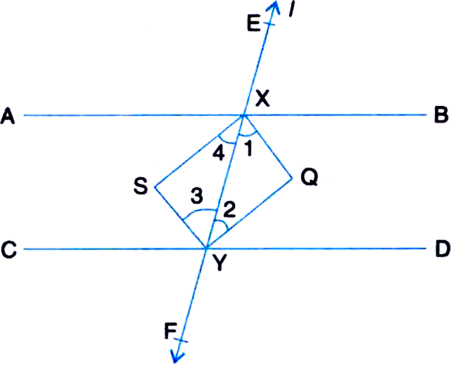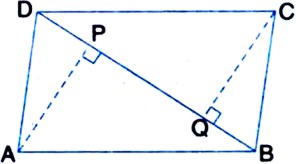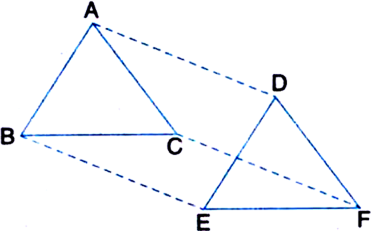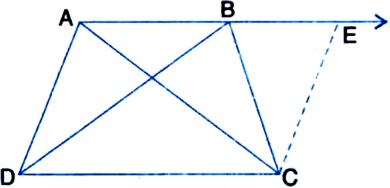AB and CD are two parallel lines and a transversal I intersects AB at X and CD at Y. Prove that the bisectors of the interior angles form a rectangle.
Given: AB and CD are two parallel lines and a transversal I intersects AB at X and CD at Y.
To Prove: The bisectors of the interior angles form a rectangle.
Proof: ∵ AB || CD and EF intersects them
∴ ∠BXY = ∠CYX
| Alternate interior ∠s![]()
| Halves of equals are equal![]()
But these angles form a pair of equal alternate angles for lines XQ and SY and a transversal XY.
∴ XQ || SY ...(1)
Similarly, we can prove that
SX || YQ ...(2)
In view of (1) and (2),
SYQX is a parallelogram
| ∵ A quadrilateral is a parallelogram if both pairs of its opposite sides are parallel
Now, ∠BXY + ∠DYX = 180°
| Consecutive interior ∠s
![]()
⇒ ∠1 + ∠2 = 90°
But ∠1 + ∠2 + ∠XQY = 180°
| Angle sum property of a ∆
⇒ 90° + ∠XQY = 180°
⇒ ∠XQY = 90°
⇒ ∠YSX = 90°
| Opposite ∠s of a ||gm are equal
and ∠SXQ = 90°
| ∵ Consecutive interior angles on the same side of a transversal are supplementary
Now, ∠SXQ = 90°
⇒ ∠SYQ = 90°
| Opposite ∠s of a ||gm are equal
Thus each angle of the parallelogram SYQX is 90°. Hence parallelogram SYQX is a
rectangle.






